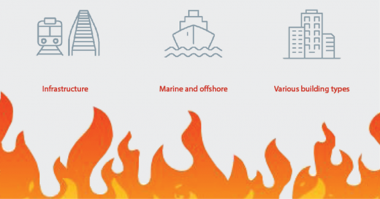At the United Nations World Water Day, the U.S. Administration hosted a White House Water Summit where Danfoss demonstrated existing technologies to achieve energy neutrality
The Administration hosted a White House Water Summit on March 22 to raise awareness of water issues and potential solutions in the United States. The summit also aimed to provide a catalyst for ideas and actions to help build a sustainable and secure water future through innovative science and technology.
Held in conjunction with the United Nations World Water Day (March 22), the event builds on COP21 and the Dec. 15, 2015 White House Roundtable on Water Innovation. The summit also brings into focus the Administration’s goal of reducing water consumption in the US by 33 percent.
Nearly 200 representatives from federal, state, regional, local and tribal levels and from other stakeholder groups attended the summit. Recognized as a pioneering country in the water and energy field, Denmark was the only country outside the US invited to share with the group its successful experience in water management.
Danish consortium demonstrates key solutions
A consortium of 12 leading Danish water technology companies, consultants and interest groups that includes Denmark-based Danfoss created a Lego city using 20,000 Lego bricks and shipped it to Washington, D.C., to display at the summit. The city demonstrates three key solutions—water resource protection, leakage reduction and energy neutrality for the entire water cycle—that have played a key role in helping the country grow its economy by 80 percent since 1980 while reducing water consumption by nearly 40 percent and keeping energy use at the same level. Danfoss provided engineering and variable-speed drive technologies to support the Danish solutions highlighted in the city.
Real-world example uses Danfoss VFDs
A second Danish exhibit, which relied on “Danfoss” 3D virtual reality goggles, introduced summit participants to a real world success story. The Marselisborg wastewater treatment plant in Aarhus, Denmark, supplies water and purifies wastewater from more than 200,000 customers. The plant has transformed from being a high energy consumer to an energy provider that today produces 40 percent more energy than it needs and 2.5 gigawatts of heat per year for the district’s heating system. To accomplish this successful transformation, the city increased the overall plant efficiency and reduced energy consumption by installing more than 140 Danfoss VLT Aqua Drives on all rotating equipment at the treatment plant and an additional 50 drives to control sewage canalization and water distribution.
The Marselisborg wastewater treatment plant has attracted the attention of cities worldwide, because water and wastewater facilities account for the largest consumption of electricity—typically 25 to 40 percent of the total power use—in most municipalities today. As a result, governments are enacting regulations to support the use of energy-efficient solutions like the one in Aarhus. The goal is energy neutrality for the entire water cycle.
Leakage reduction and desalination important to water management
Energy-saving solutions also call for the reduction of water losses in pipework due to leakage. According to the international consultancy firm McKinsey, $167 billion is wasted every year due to leakage in cities around the world. Applying variable-speed drives and sensors can control pressure in drinking water pipework to reduce leakage by as much as 30 to 40 percent and energy consumption by 20 to 50 percent.
Today’s technologies address tomorrow’s challenges
“The United Nations projects global water demand will increase as much as 55 percent by 2050,” said Mads Warming, global director, water, Danfoss Drives. “In the face of this and other sobering statistics, the importance of water management cannot be overstated. The good news is technologies exist today to address the challenges inherent in procuring, treating and distributing water tomorrow. Solutions like those in play at the Marselisborg wastewater treatment plant are already being replicated in other cities around the world as governments, industries and companies like Danfoss join forces and commit to reducing their climate impact by improving energy efficiency in buildings, manufacturing processes and other operations that support the world’s growing population.
“We applaud the Administration’s efforts to make water management a priority and look forward to contributing our unique experience and technologies to solutions that are designed to create a sustainable energy future.”





Comments